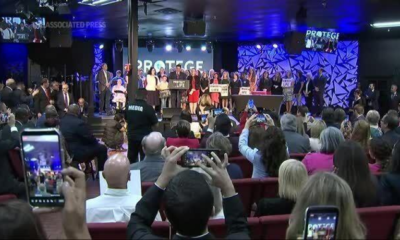Latest
Saints had options at wide receiver in Mel Kiper’s latest two-round mock
Neque porro quisquam est, qui dolorem ipsum quia dolor sit amet, consectetur, adipisci velit, sed quia non numquam eius.
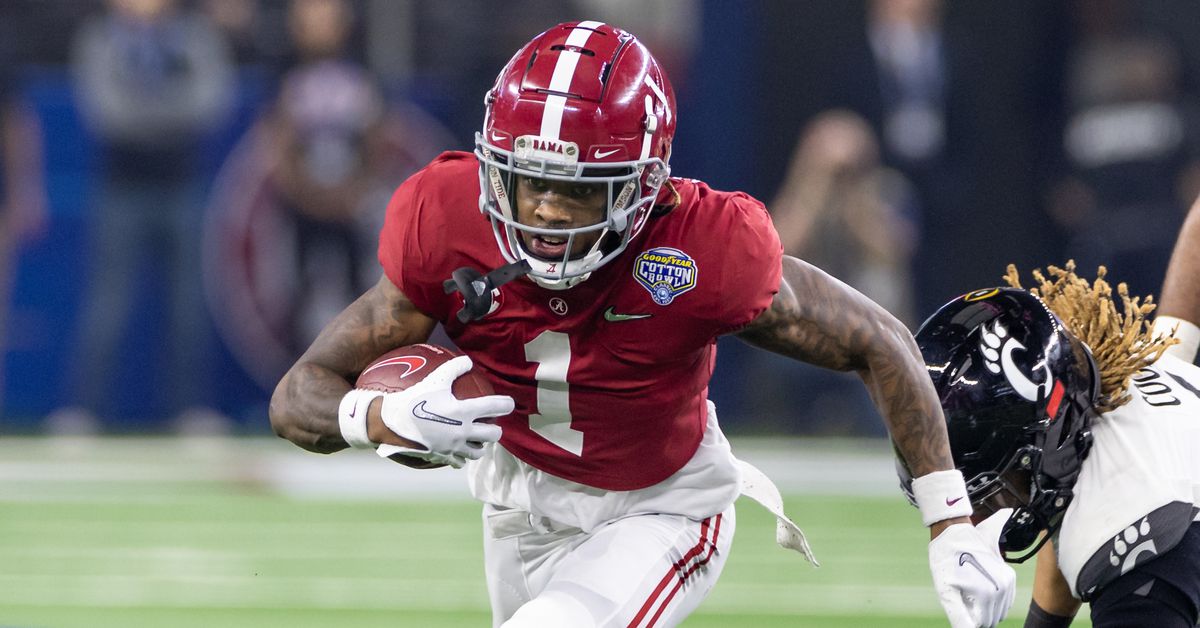
The Saints add two offensive players with their first three picks.
Another day, another mock draft. This time it’s ESPN’s Mel Kiper, Jr.’s recent two-round mock draft (Insider required) that has the New Orleans Saints address their top three positions of need with their first three picks.
A run of receivers in the first fifteen picks, including Ohio State WR Garrett Wilson (8th overall to the Atlanta Falcons), USC’s Drake London (10th overall to the New York Jets), and Ohio State WR Chris Olave (15th overall to the Philadelphia Eagles), left the Saints without a bunch of options at the 16th pick. Tackles Ikem Ekwonu out of NC State (5th to the Giants), Alabama’s Evan Neal (9th to the Seattle Seahawks), and Mississippi State’s Charles Cross (13th to the Houston Texans) left the Saints without many options there either. Quarterback Malik Willis out of Liberty was also off the board, landing in the NFC South to the rival Carolina Panthers 6th overall.
This left some of the top prospects on the board as LB Nakobe Dean out of Georgia, LT Trevor Penning out of Iowa, DT Jordan Davis from Georgia, Pittsburgh QB Kenny Pickett, and Alabama WR Jameson Williams, all of whom fit with the Saints needs.
In Kiper’s mock, the Saints passed on Kenny Pickett and instead opted to replace Terron Armstead on the left side of the offensive line by selecting Trevor Penning:
16. New Orleans Saints (via PHI/IND)
Trevor Penning, OT, Northern Iowa
Speaking of the Saints, I have a hard time believing the trade with the Eagles was to take a quarterback. Why wouldn’t they try to move up higher? (Unless there’s another move to come.) It’s possible they think they are NFC contenders this season and could be put over the edge with two more starters. With that in mind, here’s a tackle who could replace Terron Armstead on the left side. Penning is a nasty, physical blocker who is ready to play immediately.
In the two picks immediately following the Saints’ selection at 16, the pair of Georgia defensive players – Nakobe Dean and Jordan Davis – were picked, leaving the Saints with yet another opportunity to draft Kenny Pickett if the team so desired.
Instead, the Saints take the best receiver on the board, picking Alabama’s Jameson Williams:
19. New Orleans Saints (via PHI)
Jameson Williams, WR, Alabama
Even if Michael Thomas comes back healthy, the Saints should address wide receiver with one of their two first-round picks. Williams would have been in the discussion to be the No. 1 wideout in this class, but he tore his ACL in the national title game in January and could miss a little time in 2022. He could be a superstar once he’s healthy; he has explosive speed and was uncoverable for the Crimson Tide last season. ACL injuries aren’t even close to career-ending anymore, so I don’t see this as a risky pick. Williams is worth it.
Pickett ended up going one pick later to the Pittsburgh Steelers, and fellow RAS-star, Cincinnati QB Desmond Ridder, was the first quarterback taken in the second round, 40th overall to the Seattle Seahawks.
When the Saints were on the clock with the 49th pick, they had plenty of options still at quarterback (North Carolina’s Sam Howell, anyone?), and grabbed Ole Miss signal-caller Matt Corral:
Matt Corral, QB, Ole Miss
Corral is a tough evaluation. He wants to play like Josh Allen but doesn’t have the size — he’s only 6-foot-2. He was the only player in the country last season with 3,300-plus passing yards and 500-plus rushing yards. Will he be able to consistently make every throw in the NFL? That’s why I think he’s a safer bet on Day 2. He would make a lot of sense in New Orleans, where he could get an evaluation year behind Jameis Winston.
Options available for the Saints at 49 if they passed on Corral included wide receivers like Western Michigan’s Skyy Moore, Alabama’s John Metchie III, and Cincinnati’s Alec Pierce; Michigan State running back Kenneth Walker III; and a pair of tight ends in UCLA’s Greg Dulcich and Colorado State’s Trey McBride.
That left the Saints with QB Matt Corral, LT Trevor Penning, and WR Jameson Williams from their first three picks in the 2022 NFL Draft. Other possible sets include QB Kenny Pickett, WR Jameson Williams, and T Abraham Lucas; DT Jordan Davis, WR Christian Watson, TE Trey McBride; or even LT Trevor Penning, QB Kenny Pickett, and WR Jalen Tolbert.
Which set would you prefer? Would you be happy with Mel Kiper’s mock draft if the board fell that way for New Orleans? Let us know in the comments. Send me presents.
Featured
India and Pakistan Agree to Ceasefire Amid Rising Tensions

On May 10, 2025, the world breathed a cautious sigh of relief as India and Pakistan, two nuclear-armed neighbors with a long history of hostility, agreed to a ceasefire following a series of escalations that threatened to ignite a full-scale war in South Asia.
The Trigger: A Devastating Attack
The conflict reignited after a tragic terrorist attack in the Indian-administered region of Kashmir left 26 civilians dead. The assault, which targeted a busy market in the city of Srinagar, immediately raised suspicions within Indian intelligence circles, who blamed Pakistan-based militant group Jaish-e-Mohammed. India swiftly condemned the attack, calling it a “cowardly act of terror” and vowed to respond with force.
Retaliation and Escalation
Within 48 hours of the attack, India launched a series of targeted missile strikes on what it claimed were militant training camps in Pakistan-administered Kashmir. The air raids resulted in multiple casualties and further inflamed tensions between the two countries. Pakistan responded with its own military mobilization and threats of retaliation, pushing the region to the brink of war.
For days, military analysts and diplomats around the globe watched with increasing concern. Social media lit up with reports of troop movements, blackouts in border towns, and intercepted communications suggesting a possible escalation to conventional warfare. The international community, particularly the United Nations and regional allies like China and the United Arab Emirates, called for immediate de-escalation.
A Surprising Diplomatic Intervention
In a twist that caught many off-guard, former U.S. President Donald Trump stepped in as an unofficial mediator. Leveraging his prior relationships with both Indian and Pakistani leaders from his time in office, Trump initiated a series of behind-the-scenes discussions. According to insiders, the former president made multiple phone calls and engaged in shuttle diplomacy to broker peace.
Critics questioned Trump’s involvement, but even skeptics admitted that his intervention appeared to cool tempers. The talks culminated in an agreement between Indian Prime Minister Arvind Reddy and Pakistani President Ahsan Qureshi to observe a full ceasefire starting immediately.
Terms of the Ceasefire
The agreement included several key components:
- Immediate halt to all military actions along the Line of Control (LoC).
- Establishment of a joint investigation into the Kashmir attack, with representatives from both nations and neutral observers.
- Reinstatement of diplomatic backchannels that had gone cold since 2023.
- A scheduled summit in Geneva in July 2025 to discuss long-term peace frameworks and cross-border terrorism.
Indian Defense Minister Nikhil Menon confirmed the ceasefire in a televised address, stating, “While we will never tolerate terrorism, we recognize the importance of dialogue in preventing further loss of life.”
Reactions at Home and Abroad
Domestically, reactions were mixed. Indian nationalists criticized the government for not pursuing a more aggressive stance, while peace advocates praised the leadership for prioritizing diplomacy over war. In Pakistan, President Qureshi faced both praise for preventing escalation and criticism for conceding too quickly under international pressure.
Global leaders, including UN Secretary-General Antonio Guterres, applauded the ceasefire as a step in the right direction. China issued a statement urging both countries to continue working toward peaceful solutions, while Russia offered to host future peace talks.
What’s Next?
While the ceasefire has brought temporary calm, the underlying issues remain unresolved. The Kashmir region continues to be a flashpoint, and both nations harbor deep mistrust. Experts warn that without substantial policy changes and mutual agreements, future flare-ups are inevitable.
Still, the May 10 ceasefire is a reminder of the power of diplomacy—even when led by unexpected figures. Whether this truce holds or falters will depend on the upcoming Geneva summit and the political will of both nations to choose peace over provocation.
For now, South Asia watches and waits.
Featured
China’s Strategic Clapback: How Luxury Brand Exposure Became an Economic Retaliation Tool
China claps back on the United States

In the wake of escalating tariff tensions between the United States and China, a new form of economic retaliation has emerged—one that doesn’t involve additional taxes, embargoes, or diplomatic statements. Instead, China has turned to social media and transparency as its sharpest tools. What began as viral content on platforms like Douyin (China’s version of TikTok) has become a calculated, highly effective campaign revealing the true cost structures and manufacturing origins of Western luxury products.
The results? Consumer backlash, brand skepticism, and a major shake-up in global perceptions of luxury.
The Backdrop: U.S. Tariffs and China’s Silent Response
The U.S. recently imposed a new wave of tariffs targeting Chinese imports—ranging from electric vehicles to critical components used in renewable energy and technology sectors. Instead of responding through traditional government channels, China opted for a culturally resonant and strategically disruptive response: peeling back the curtain on the luxury goods Americans hold dear.
Through viral videos, Chinese factory workers, influencers, and content creators have started showcasing the real production costs and assembly processes behind designer items sold by global brands like Hermès, Gucci, Chanel, and others. The content, often presented in side-by-side comparisons of production cost versus retail price, has gone viral on both Douyin and TikTok, resonating with a global audience of skeptical, budget-conscious consumers.
Revealing the Margins: From $100 Manufacturing to $10,000 Price Tags
One widely shared video displayed the step-by-step manufacturing of a Hermès-inspired handbag, noting that its production cost was approximately $120 USD. The retail equivalent of the same bag? Upwards of $12,000. Similar videos have shown luxury sneakers being produced for under $30, designer belts for less than $20, and branded jewelry created from base materials available at a fraction of retail prices.
The implications are far-reaching. For decades, luxury brands have justified their price points through the appeal of exclusivity, craftsmanship, and brand legacy. However, this transparency campaign is effectively undercutting that narrative by focusing the spotlight on the reality of outsourced labor and inflated margins.
Psychological Warfare Through Transparency
While the move may appear grassroots, industry analysts suggest this surge of transparency is anything but random. It comes at a time when the Chinese government is tightening its internal regulations on displays of wealth and pushing for greater domestic modesty in personal consumption. At the same time, this exposure allows China to assert quiet leverage in the ongoing trade war.
By revealing that many luxury products sold in the West are, in fact, manufactured in China—often in the very factories now subject to tariffs—China is flipping the power dynamic. It’s a reminder to Western consumers and lawmakers alike: China is not merely a source of low-cost goods—it is also the backbone of many of the West’s most celebrated brands.
This form of “soft retaliation” is strikingly effective. Rather than targeting governments, it targets perceptions. And in an era where brand reputation can swing markets, perception is everything.
Consumer Reaction: Disillusionment and Demand for Accountability
As these revelations gain traction, social media has become a hotbed of discussion. Consumers, especially younger generations, are questioning the true value of the luxury items they once saved up for. Comments across platforms express a common theme: disillusionment.
Many are calling for more ethical transparency in pricing models and supply chain management. The exposure has also triggered interest in alternative luxury, such as direct-to-consumer models and brands that prioritize authenticity and fair labor practices.
This shift presents both a challenge and an opportunity for global luxury brands. The challenge: rebuilding consumer trust. The opportunity: reintroducing their value in a way that withstands scrutiny—not just from regulators, but from an increasingly informed customer base.
Broader Implications for the Luxury Market
The luxury industry is built not only on materials and labor, but on perception. Prestige, quality, and exclusivity are carefully curated attributes that command high margins. The current wave of manufacturing transparency challenges the very foundation of that perception.
As global consumers become more aware of product sourcing and true cost structures, brands will be forced to adapt. This may lead to:
- A deeper investment in domestic manufacturing to regain trust
- Greater openness about pricing models and ethical practices
- Stronger marketing around craftsmanship and quality assurance
At the same time, this may also accelerate the decline of blind brand loyalty. Consumers are already turning toward values-based shopping, and this transparency push could expedite that shift.
Conclusion: Economic Strategy Reimagined
China’s decision to allow—or at least not suppress—the mass exposure of U.S. luxury brands’ production realities is a masterclass in modern economic strategy. It sidesteps direct confrontation and instead wields cultural and consumer influence as tools of power. Rather than imposing tariffs of its own, China has placed the burden of response on Western companies and the consumers they serve.
As the global economy becomes more interconnected and more visible, traditional forms of economic retaliation may give way to perception-based strategies. In this case, China has sent a message loud and clear: If you’re going to tax our exports, don’t be surprised when we reveal what your imports are really made of.
Featured
China’s Rising AI Powerhouses: Who’s Coming for DeepSeek’s Crown?
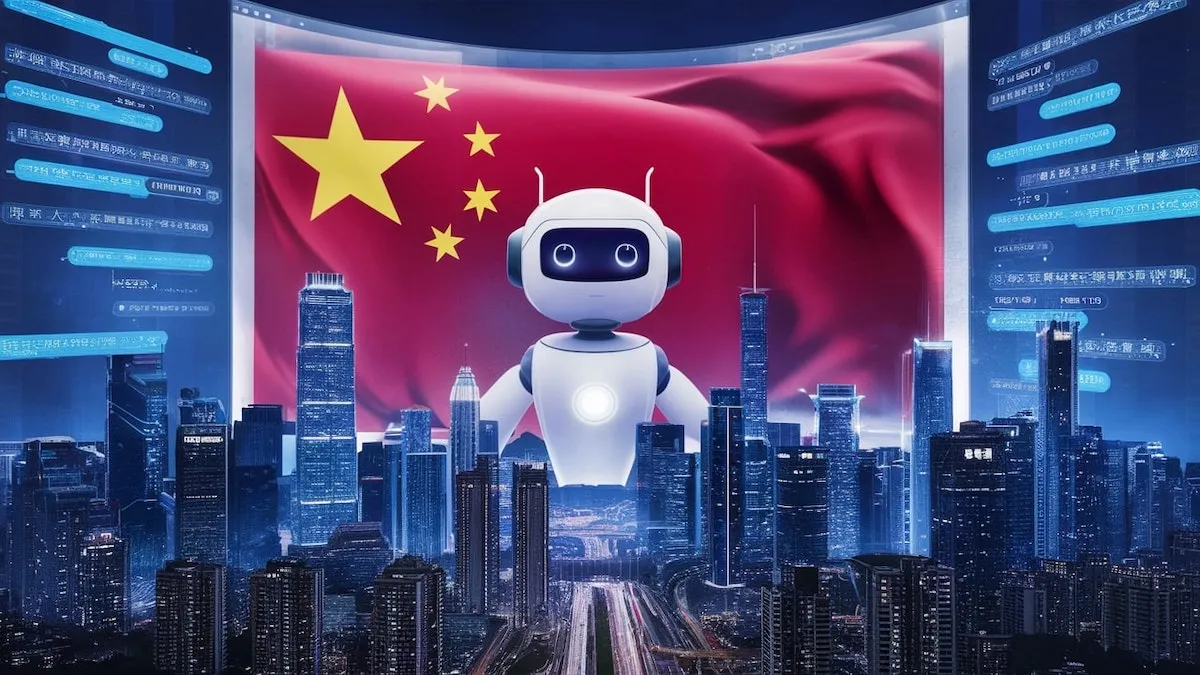
As China races to lead the global artificial intelligence boom, a new generation of AI players is rising—fast. While DeepSeek may currently wear the crown, several ambitious tech titans and scrappy startups are hot on its heels. From generative text to powerful multi-modal models, these companies are building smarter, faster, and more accessible AI—ready to compete not just at home, but globally.
1. Alibaba Cloud’s Qwen 2.5-Max: Big Tech, Bigger Ambitions
Alibaba has entered the AI arms race with Qwen 2.5-Max, a large language model that already claims to outperform rivals like Meta’s LLaMA and OpenAI’s GPT in key areas. Backed by Alibaba Cloud, this model is fast becoming a key asset in China’s push for AI dominance, offering enterprise-grade power with regional language fluency.
2. Moonshot AI’s Kimi k1.5: The Long-Context Contender
Moonshot AI’s Kimi k1.5 is earning serious attention for its ability to handle prompts with up to 2 million Chinese characters—yes, million. That’s a massive leap for long-context processing and could revolutionize how businesses handle large-scale data analysis, legal contracts, and scientific documents.
3. ByteDance’s Doubao-1.5-pro: The TikTok Giant Goes Deep Tech
Better known for TikTok, ByteDance is now flexing its AI muscles with Doubao-1.5-pro. The model promises competitive performance while keeping costs low—a direct swipe at OpenAI’s pricing model. It’s ByteDance’s clear signal that they’re not just playing in the consumer space anymore.
4. Tencent’s Hunyuan: AI That Fits in Your Pocket
Tencent is betting on accessibility with Hunyuan, a multi-modal AI engine that can turn text into video, generate content, and deliver results on mobile devices. With integration into WeChat and impressive rankings in Chinese app stores, Hunyuan is blending everyday convenience with deep AI capabilities.
5. Baidu’s Ernie Models: Smarter, Cheaper, Faster
Baidu isn’t sitting idle. With the release of Ernie X1 and the upgraded Ernie 4.5, it’s carving out space for powerful, cost-effective alternatives to DeepSeek. These models are trained not just for performance, but also to understand emotional cues—a nod to the growing demand for AI that feels more human.
6. Manus by Monica: One Prompt, Endless Action
The underdog in this race may be the most interesting. Manus, developed by AI startup Monica, acts like an autonomous agent capable of handling full workflows from a single prompt. While skeptics are calling it overhyped, its potential to reshape productivity tools and customer service is worth watching.
The Takeaway?
DeepSeek might have kicked down the door, but China’s AI boom is just getting started. Whether it’s Alibaba’s enterprise precision, Moonshot’s long-context wizardry, or Tencent’s consumer-friendly AI in your pocket, these companies aren’t just following the leader—they’re aiming to become one.
Keep watching. The next AI world leader might already be live, running quietly in an app on someone’s phone in Shanghai.
-

 Featured9 months ago
Featured9 months ago20 Entrepreneurs to Watch Closeout 2024
-

 Innovation1 year ago
Innovation1 year agoLeo Horacio: A Successful Entrepreneur in the Ecommerce and Online Sales Industry
-

 Innovation11 months ago
Innovation11 months agoInnovators in Social-Emotional Learning: Dr. Myava Clark and Chris Clark Jr.
-

 Latest11 months ago
Latest11 months agoCharles zhang recognized by forbes as #1 on michigan’s 2022 best in state wealth advisor list
-

 Lifestyle1 year ago
Lifestyle1 year agoPhillip Austin brings outlaw country to General Duffy’s stage – The Bulletin
-

 Music12 months ago
Music12 months agoArtist Deydee Signs $350,000 Contract with Rueda Empire LLC
-
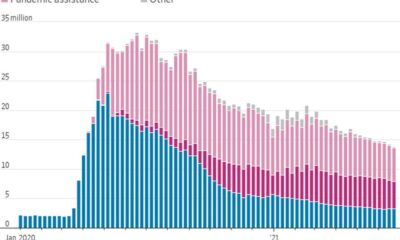
 Small Business10 months ago
Small Business10 months agoSmall Business Labor Shortage – Forbes
-
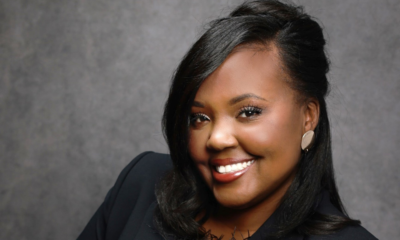
 Uncategorized7 months ago
Uncategorized7 months agoTrailblazer in Business: Alicia Fitts on Building Wealth and Community Through Faith
